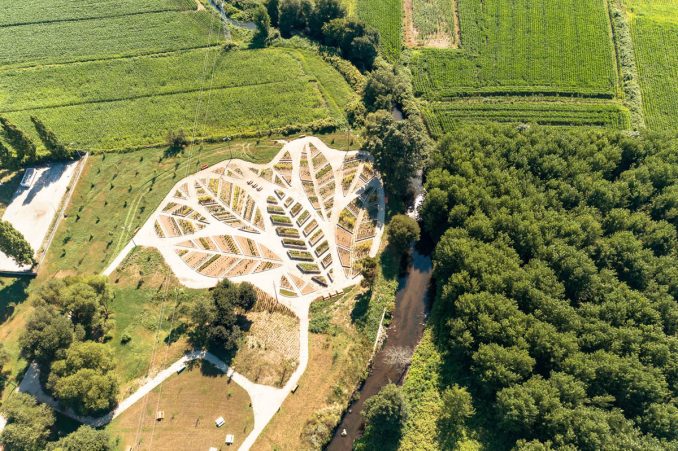

The park is located on the left bank of the Leça river in the North of Portugal in the city of Ermesinde, Valongo. This region, once agricultural land, has suffered the dynamics of metropolization and the Leça River was considered one of the most polluted rivers in Europe. In the last decades of the 20th century, a process of environmental recovery has begun, with several projects being developed simultaneously and actions being implemented along the course of the river resulting in the definition of the Green Corridor of Leça River. The park integrates this green corridor and aims to offer a diversity of uses, promote environmental requalification and biodiversity, and display urban agriculture practices whilst providing recreation and the memory/identity of the place.

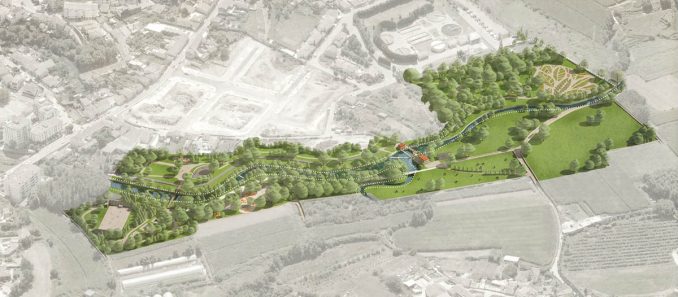
The first phase of intervention in the park consisted of the following actions:
- Recovery of degraded soils – removal of larger residues and incorporation of small non-toxic residues on the ground. Placement of 40 cm of amended soil over the existing ground.
- Rehabilitation and renaturalization of the river banks – stabilization and consolidation. Opportunity to explain and demonstrate the many natural engineering techniques creating a river laboratory. The population can verify the results and follow the development of the vegetation.
- Creation of rainwater retention basins – to conduct rainwater to terrain depressions resulting in infiltration on the ground. In this project phase, the entire area is 100% permeable.
- Promotion of biodiversity-related to naturalized and agricultural spaces – construction of a recreational space planted with regional orchard species to attract bees. The great diversity of vegetable, aromatic, medicinal and flower species in the allotment garden. Planting of native riparian species along the river banks.
- Construction of the leaf-shaped vegetable garden with plots that could be used by citizens to own production and plots intended for training and education programs. In these educational plots, cultivation techniques are demonstrated, and it is explained which species can be used in vegetable gardens, roof gardens and balconies, promoting organic food production. The plots have different heights and dimensions, so they can be used by people of all ages with different physical and mental aptitudes.
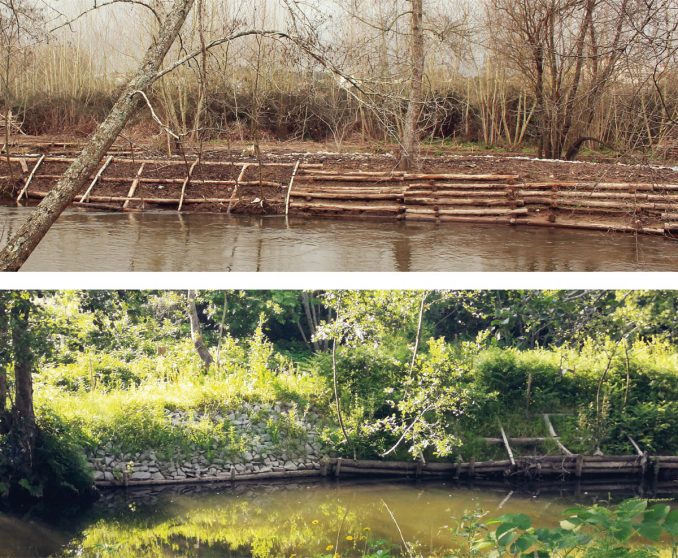
Regarding the genius loci of the place, the intention is to maintain and recover contact with nature and agricultural areas and improve access to the river that once was a place of fishing and swimming. The colours on the furniture, pavements and raised beds to allude to the materials traditionally used in the construction of this city, such as slate, brick and white painted masonry.
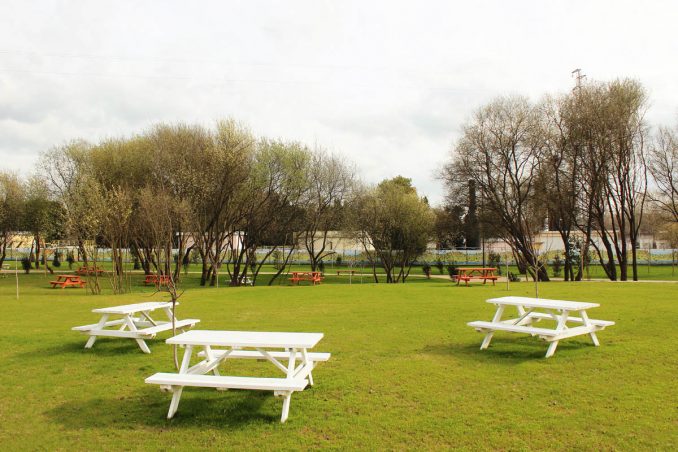
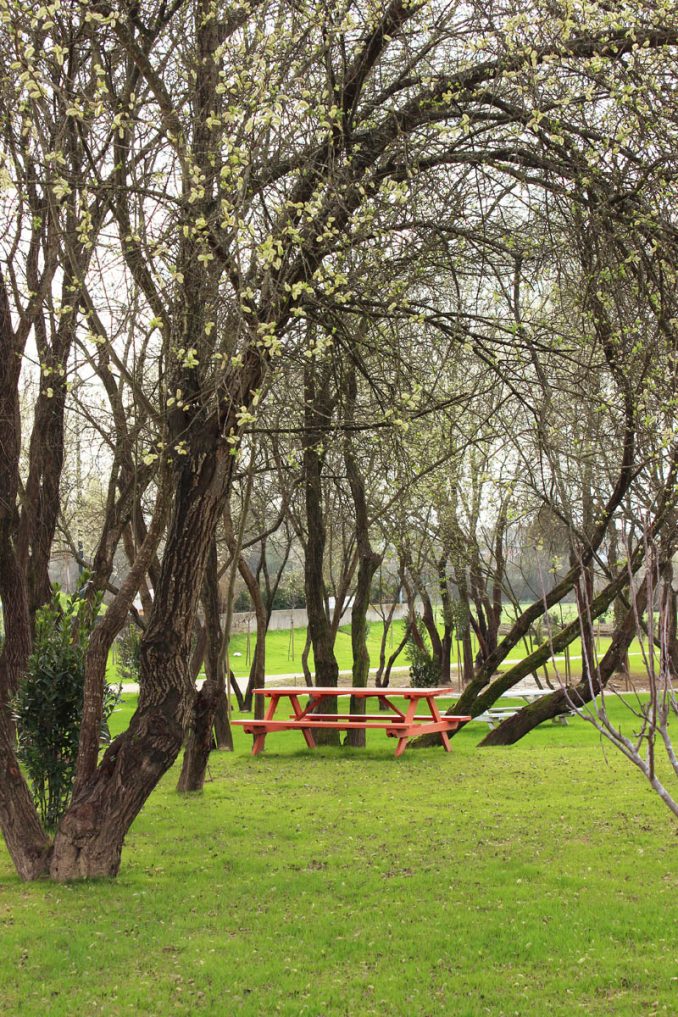
For the users of the park, the space allows, above all, recreation. Fundamentally it is an intervention that aims at the recovery of a degraded landscape that considered teaching and informing the population, improving water quality, recharging aquifer resources, creating protection buffers for flooded areas and promoting biodiversity associated with the identity of the place.
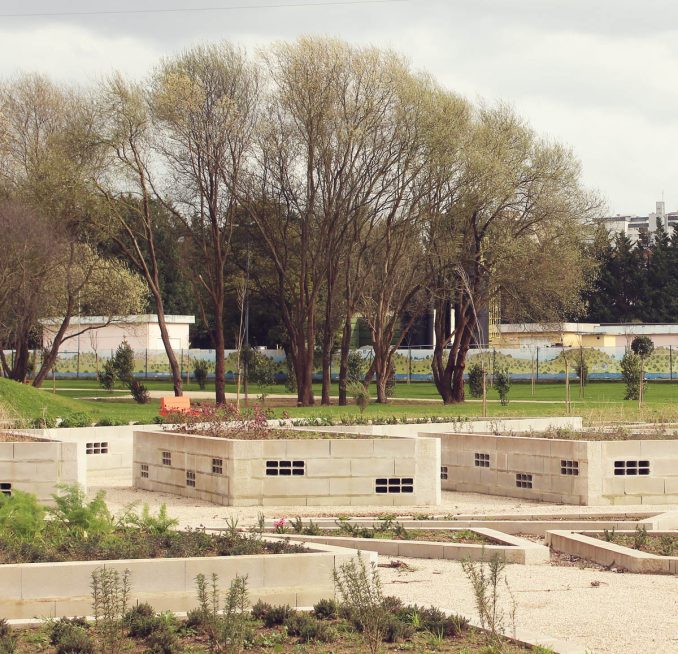
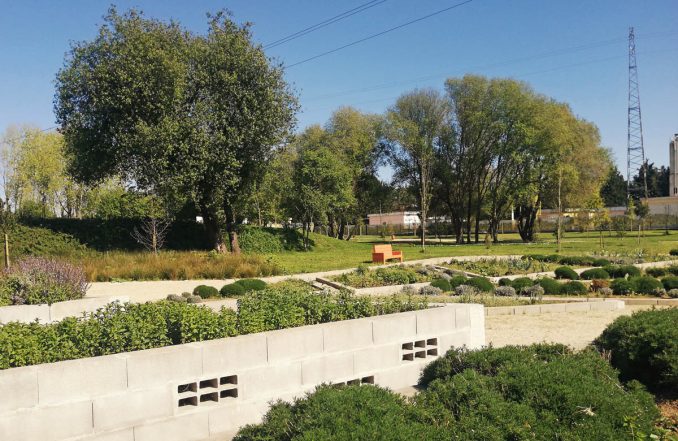
Parque do Leça – Ermesinde
Location: Ermesinde – Valongo, Portugal.
Client: Câmara Municipal de Valongo
Design Company: LRC – Arquitetura Paisagista
Landscape Architecture: Laura Costa and Carlos Dias
Architecture and Engineering: Célia Mota; Gaspar Freitas and Serafim Almeida
Lighting Engineering: Fernando Ramos
Natural Engineering: Pedro Teiga; António Pinto; Maria Botelho and José Letra
Photography Credits: Carlos Dias, Laura Costa and C.M.Valongo
